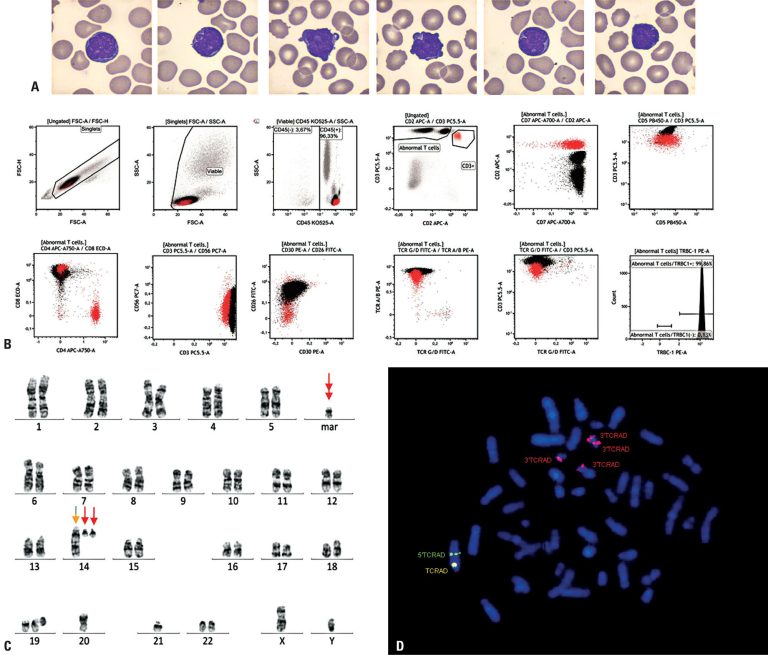einstein (São Paulo). 31/Oct/2025;23:eRC1899.
Asymptomatic T prolymphocytic leukemia: case report and literature review
DOI: 10.31744/einstein_journal/2025RC1899
ABSTRACT
T-cell prolymphocytic leukemia is a rare and aggressive mature T-cell malignancy that usually presents with marked lymphocytosis, hepatosplenomegaly, lymphadenopathy, and B symptoms. However, a minority of patients present with an indolent, asymptomatic form. Case Report: A 44-year-old man was diagnosed with asymptomatic T-cell prolymphocytic leukemia after routine blood tests revealed persistent lymphocytosis. Immunophenotyping revealed a mature CD4–/CD8+ T-cell population. Cytogenetic analysis showed 14q11.2 abnormalities with TCRAD rearrangement by fluorescent in situ hybridization. A monoclonal T-cell population was confirmed by flow cytometry and polymerase chain reaction, and a STAT5B mutation was identified by next-generation sequencing. The patient had no cytopenia or organ involvement and a watch-and-wait strategy was adopted. The pathogenesis of T-cell prolymphocytic leukemia involves recurrent genetic alterations, including TCL1A rearrangements and ATM mutations, which promote genomic instability. Despite their aggressive nature, up to 30% of cases initially follow an indolent course, allowing for observation rather than immediate treatment. Standard therapies include alemtuzumab-based regimens and hematopoietic stem cell transplantation, although relapse rates remain high. Conclusion: This case underscores the need to recognize indolent presentations of T-cell prolymphocytic leukemia that may be managed conservatively. Further research is required to identify prognostic markers and optimize therapeutic strategies.
3



